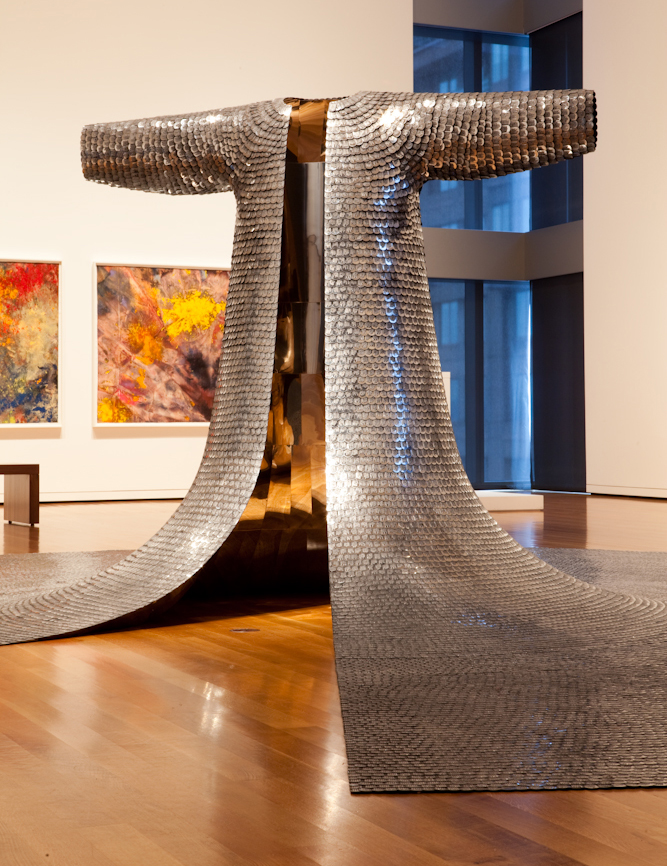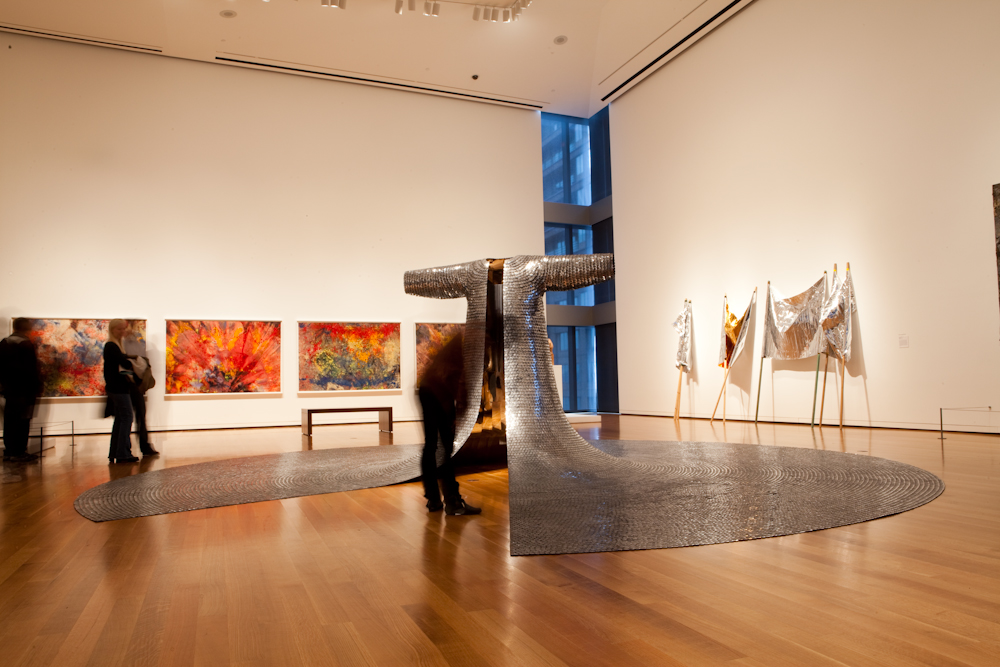Object of the Week: Some/One

For artist Do Ho Suh, clothing is the “smallest, most intimate habitat that one person can carry. And when you expand that idea, it becomes architecture.”¹ Indeed, Some/One—a monumental armor sculpture made from thousands of military dog tags—embodies the architectural possibilities that Suh sees in clothing.
Answering the question “How much space does one need to be an individual?” Suh explores the relationship between individual and collective, redefining how we might perceive this dichotomy. Some/One in particular is informed by Suh’s experience in the Korean military, which is mandatory service for young men. Unified as one coat of armor, the chain mail-like sculpture is comprised of unique metal tags—each one bearing a sequence of random letters and numbers.² The sculpture somehow manages to defy gravity despite the imagined weight of its 30,000-plus stainless steel tags. Additionally, the piece’s large fanning base serves dual purposes: it supports the sculpture structurally, as well as makes physical and metaphorical space to consider the work’s footprint.

Dog tags are inherently a marker of individualism used to identify soldiers, but they also connect a troop to a larger collective and, ultimately, nation. In the words of the artist, “When you see a person, you don’t just see the person standing in front of you—you see their background, their family or ancestors, the invisible webs of relationship or information.”³ When we see one person’s tag, we see so much more than a name, place of birth, or unit—we see their life.
Further, the reflective surface and mirrored interior of Some/One underscores the artist’s desire for viewers to see themselves—literally and figuratively—in the work. Whether the sculpture serves as a monument honoring fallen troops or highligts the anonymity of their service (or carries other readings altogether) is willfully left open to the viewer. This work is not currently on view but it will be exhibited when the Seattle Asian Art Museum reopens in late 2019.
– Elisabeth Smith, Collections Coordinator